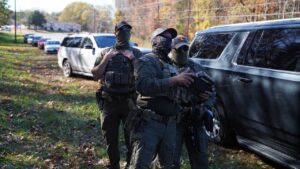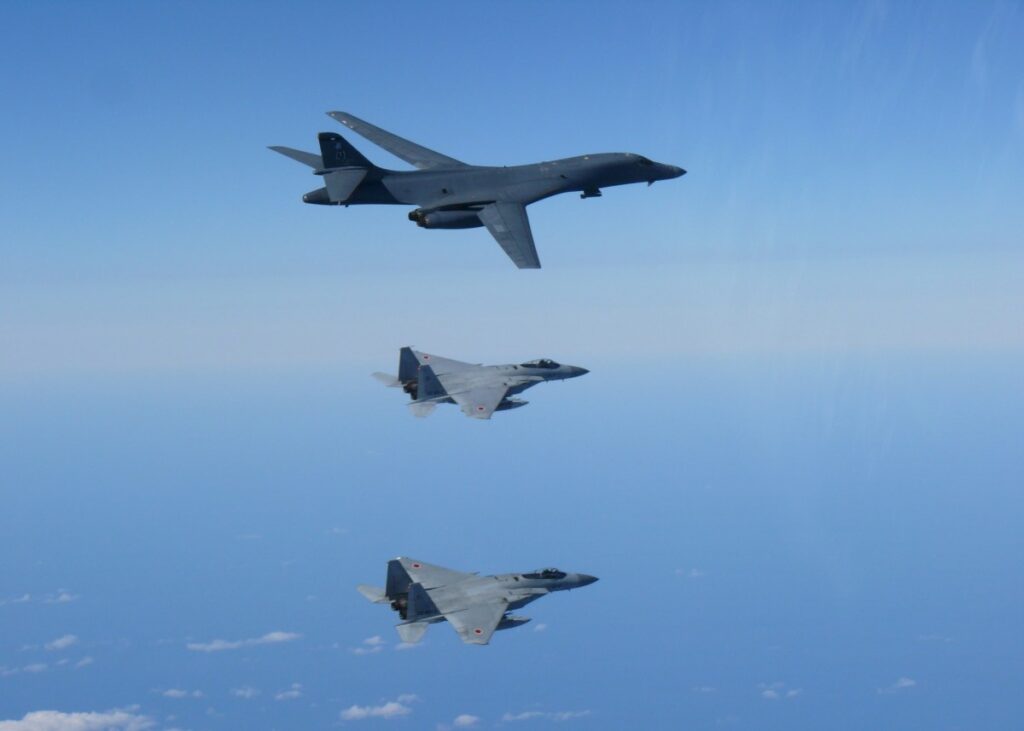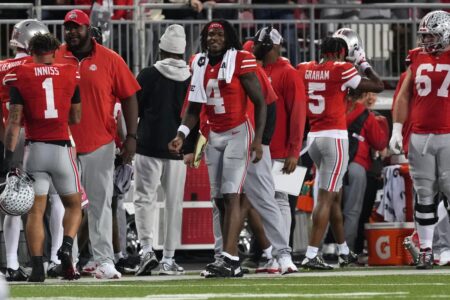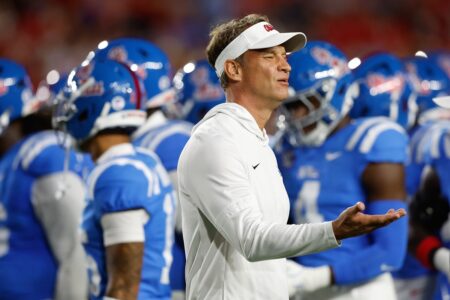An American bomber was dispatched for an exercise with Japanese fighter aircraft to strengthen their joint combat capabilities as the United States ally faces threats from China, which has warned Tokyo not to intervene if Beijing moves against Taiwan.
The Chinese Foreign Ministry did not immediately respond to a request for comment.
Why It Matters
Communist China has long claimed Taiwan—a self-ruled island—as its territory and has threatened to achieve reunification by force if necessary. Japanese Prime Minister Sanae Takaichi recently argued that China’s use of force would constitute an existential crisis for Japan, which could justify a response by its military, the Self-Defense Forces.
Takaichi’s comments drew fierce criticism from China. A Chinese consul general in Osaka appeared to threaten to decapitate the prime minister in a now-deleted social media post, while the Chinese Foreign Ministry warned that Japan would face a “severe blow” over what it called “aggression” against Chinese national reunification.
What To Know
In an announcement also shared by the U.S. Pacific Air Forces, Tokyo’s Joint Staff of the Defense Ministry said the Air Self-Defense Force conducted “a tactical exercise” with a U.S. Air Force B-1B bomber over waters surrounding Japan on Saturday.
A total of four Japanese fighter jets—two F-15s and two F-2s—were deployed, flying with the U.S. bomber. The B-1B has the largest payload of conventional weapons in the U.S. Air Force, capable of carrying up to 75,000 pounds of bombs and missiles.
The bomber is capable of rapidly delivering massive quantities of weapons against any adversary, anywhere in the world, at any time, the U.S. Air Force said in a fact sheet.
At least four B-1B bombers arrived at Misawa Air Base in northern Japan last month. The U.S. Pacific Air Forces confirmed to Newsweek that the aircraft were deployed to support training efforts and strategic deterrence missions to reinforce regional stability.
“This bilateral exercise reaffirms the strong will between Japan and U.S. not to tolerate unilateral changes to the status quo by force,” Japan’s Joint Staff said, adding that the drill was conducted amid what it called “an increasingly severe security environment.”
On Monday, a pair of B-1B bombers were spotted flying southeast of Okinawa, Japan’s southernmost island, after departing Misawa Air Base, with at least one tracked transiting over the East China Sea as it returned to Japan’s main islands, according to flight data.
Japan, a U.S. mutual defense treaty ally, hosts about 60,000 American troops in return for U.S. security guarantees. The allies frequently conduct war games, including one held in September that involved a U.S. land-based missile system, to bolster deterrence.
What People Are Saying
The U.S. Pacific Air Forces said on Sunday: “The continued collaboration between Japan and the U.S. tangibly demonstrates strength and an unwavering commitment to the defense of our vital interests against threats and bolsters deterrence in the Indo-Pacific.”
Japan’s Joint Staff announced on Sunday: “This [bilateral exercise] also demonstrates the readiness of [Japan Self-Defense Forces] and U.S. Armed Forces, and further strengthens the deterrence and response capabilities of the Japan-U.S. Alliance.”
What Happens Next
The U.S. is expected to continue its military activities with Japan, part of a north-south island chain under America’s containment strategy to deter China’s potential aggression, to signal its security commitment to the ally amid a growing Chinese military threat.
Read the full article here














